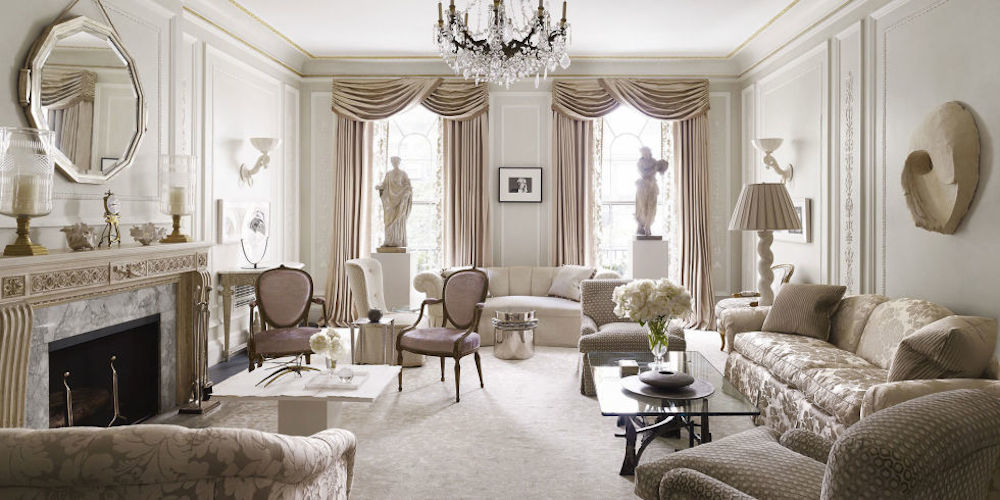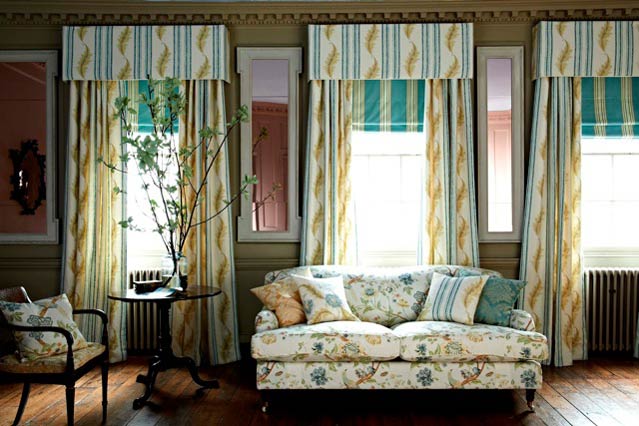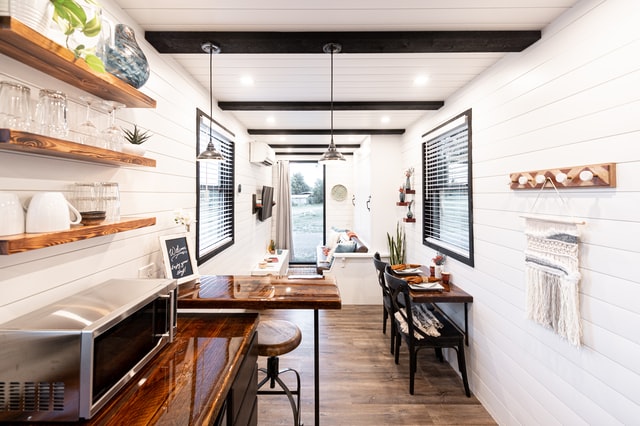Welcome to Design Dictionary, a new feature that defines common (and occasionally very uncommon) terms used in interior design, architecture, and home improvement.
Walk through any neighborhood (city or suburban) and you’re likely to get an eyeful. It seems that many homes have completely nixed the idea of fabric window treatments. Occasionally, you’ll glimpse a lovely voile or luxurious silk panel, but mainly you’ll spy mini-blinds—if anything at all.
So it’s not completely surprising that mentioning valances, cornices, and pelmets to anyone but the most design-minded will earn you a quizzical stare. However, in previous decades, these window accessories offered a host of different ways to update your home (check out The 1929 Kirsch Book: A Stylebook of Window and Door Drapings to see just how seriously we used to take our windows).
So let’s get savvy: What in the world is a pelmet?
Valances, cornices, and pelmets all refer to decorative coverings that hide curtain rods or mounting hardware. They can be made of a range of materials, and the words are often used interchangeably to refer to the same things. However, here is a general overview of each term:
1. Valances
Valances are traditionally made of fabric—basically, a short curtain. Here is where window treatments get very creative, with swags of sheer material, voluminous balloon-style valances that bring to mind ball gowns, tiered versions, fringes, tassels, and more.
Because they’re lightweight and can be bought in standard widths, valances are more widely known. This term also has become a catch-all, and is widely used to refer to both pelmets and cornices (unless you’re in the United Kingdom, where valances are always called pelmets). You can pair valances with window blinds, or use them to complement your current window treatments. To make a simple box-pleated valance yourself, visit Effortless Style.
2. Cornices
Cornices usually refer to decorative coverings constructed of wood. They are more architectural in nature, and are often inspired by molding. Cornices can be built into a window frame, or they can be added to an existing window by constructing a box-like structure. For a how-to on making a cornice yourself, visit This Old House.
3. Pelmets
Pelmets are boxy structures (which can be made of lightweight wood, or even foamcore if you’re going the DIY route) that cover the top of a window. Unlike cornices, they are also upholstered, which allows you to match or coordinate the pelmet to your current drapes or curtains. You can also get creative with shape—pelmets can be flat-bottomed, like those in the above photo, or can be arched to varying degrees. For a DIY how-to on making an arched cornice, visit Little Green Notebook.
Top Image Credit: House and Garden UK
Do you have pelmets, cornices, or valances in your home? Did you already know these design terms, or are they news to you?







